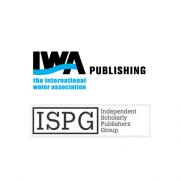Sludge Drying Overview - Treatment Methods and Applications
Sludge is a residual, semi-solid by-product left from industrial or refining processes. It is a separated solid suspended in a liquid, typically containing major quantities of interstitial water between its solid particles. This material can be dried to cut its volume and reduce most of the moisture content of the biosolids present in the sludge.
Helminth eggs
Helminth eggs are the infective agents for the types of worm diseases known globally as helminthiases. Although helminths are pluricellular animals their eggs are microscopic (around 20 to 80 μm for those that are important in the sanitary field) and are contained in variable amounts in wastewater, sludge and excreta. Helminth eggs infect humans through: (1) the ingestion of food crops polluted with wastewater sludge or excreta, (2) direct contact with polluted sludge or faecal material, and (3) the ingestion of polluted meat or fish.
Bio-toilets: Sustainable Solution to India’s Sanitation Challenge
Banka BioLoo Pvt Ltd, a firm committed to environmental betterment and social uplift, is supporting to eradicate the malaise of open defecation in India. By providing eco-friendly bio-toilets (or bioloos), the enterprise is helping meet the Millennium Development Goals (MDG-7) and actively supporting the government’s vision of an open defecation free society.
Removal Technologies in Wastewater Treatment
Since heavy metal ions are non-biodegradable, they can accumulate their amounts along the food chain. Therefore, it is critical necessary to remove or minimize the heavy metal ions in wastewater systematically. In this article, we mainly introduce three commonly used methods for heavy metal elimination: chemical precipitation, ion exchange, and adsorption.
Integrated Water Resources Management: Basic Concepts
IWRM is based on the three principles: social equity, economic efficiency and environmental sustainability. Considering these principles means answering the following questions:
- How will my decision/ action affect access for other users to water or the benefits from its use?
- Will my decision/ action result in the ‘most efficient use of the available financial & water resources?
- How will my decision/ action affect the functioning of natural systems?
Distillation Treatment and Removal of Contaminants from Drinking Water
Distillation treatment typically removes most of the dissolved materials. In addition, the boiling process kills biological contaminants. Nevertheless, there are certain volatile and semi-volatile organic compounds that may not be removed by distillation (CDPH 2009). Organic compounds that boil at temperatures greater than the boiling point of water (some pesticides) can be effectively removed from the water (MSUE 2003). Organic compounds that boil at temperatures lower than the boiling point of water (ex., benzene and toluene) will be vaporized along with the water. If these harmful compounds are not removed prior to condensation, they will remain in the purified product (MSUE 2003).
Arsenic Contamination In Groundwater In Bangladesh: An Environmental And Social Disaster
Before 1971 (Year of independence from Pakisthan), thousand of people died each year due to water born diseases in Bangladesh. To provide safe water, with help of UNECEF, the Government of Bangladesh (GoB) installed millions of tubewell which ensured safe drinking water to 97% population of Bangladesh. When the people are habituated with tubewell water, then in 1993, the people of Bangladesh discover the silent killer, the Arsenic. It becomes a challenge to an excellent public health success story. This paper has reviewed environmental and social implication of Arsenic in Bangladesh
ADDIS ABABA: Sanitation Status
Sanitation provision in Addis Ababa (the capital of Ethiopia) is grossly deficient, as in most cities in sub-Saharan Africa: most people do not have access to a hygienic toilet; large amounts of faecal waste are discharged to the environment without adequate treatment; this is likely to have major impacts on infectious disease burden and quality of life (Hutton et al. 2007). This article briefly summarizes the current sanitation situation in Addis Ababa.
Activated Sludge Process
Activated sludge (AS) is a process dealing with the treatment of sewage and industrial wastewaters and developed around 1912-1914. There is a large varity of design, however, in principle all AS consist of three main components: an aeration tank, which serves as bio reactor; a settling tank ("final clarifier") for seperation of AS solids and treated waste water; a return activated sludge (RAS) equipment to transfer settled AS from the clarifier to the influent of the aeration tank.
 IWA Publishing joins the Independent Scholarly Publishers Group, adding 12 journals and Water Intelligence Online to the collection
IWA Publishing joins the Independent Scholarly Publishers Group, adding 12 journals and Water Intelligence Online to the collection
We are pleased to announce that IWA Publishing has joined the Independent Scholarly Publishers Group (ISPG). Dragonfly provides global sales representation for the ISPG, a consortium of 23 health sciences, life sciences and environmental sciences...
Pages
- « first
- ‹ previous
- 1
- 2
- 3